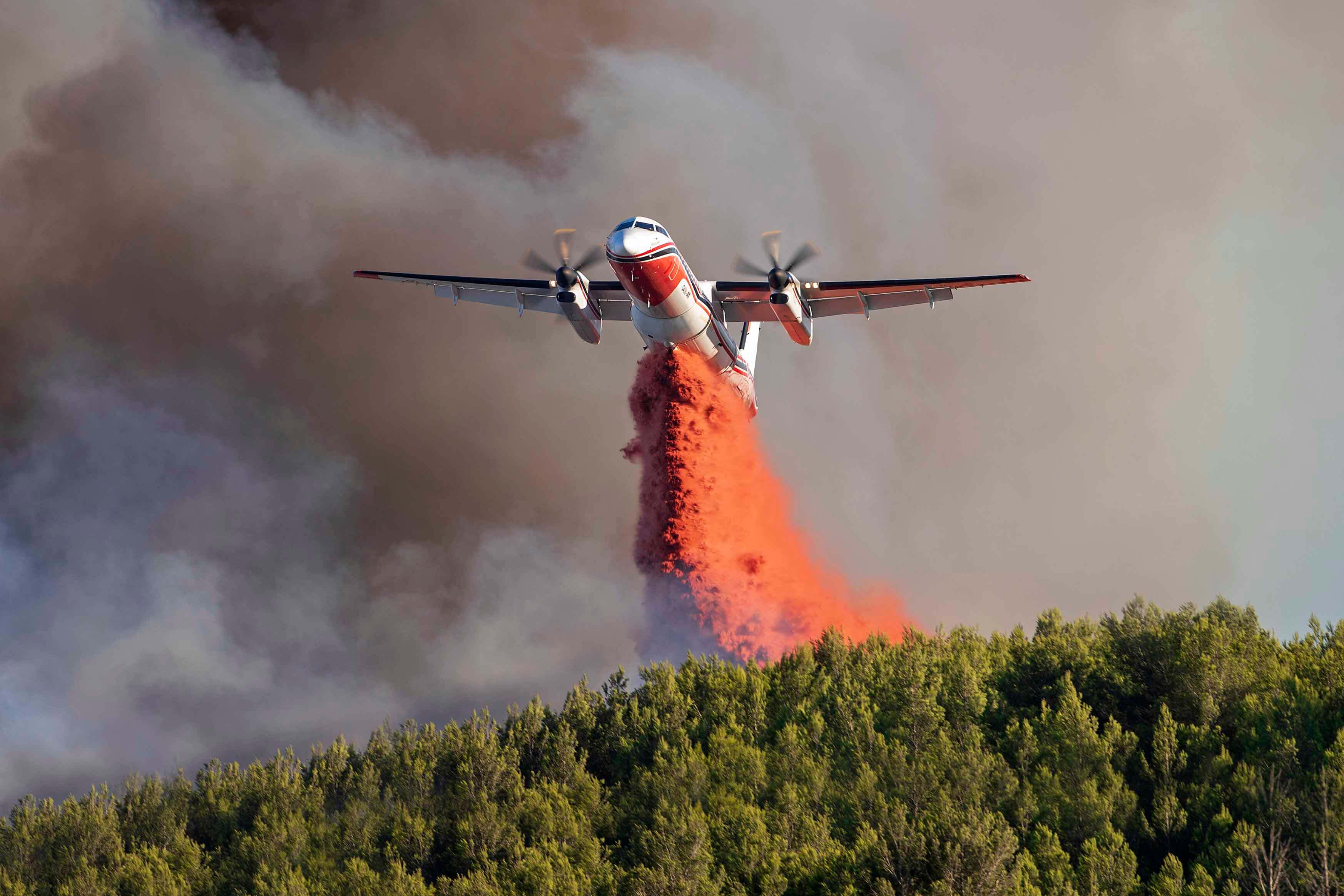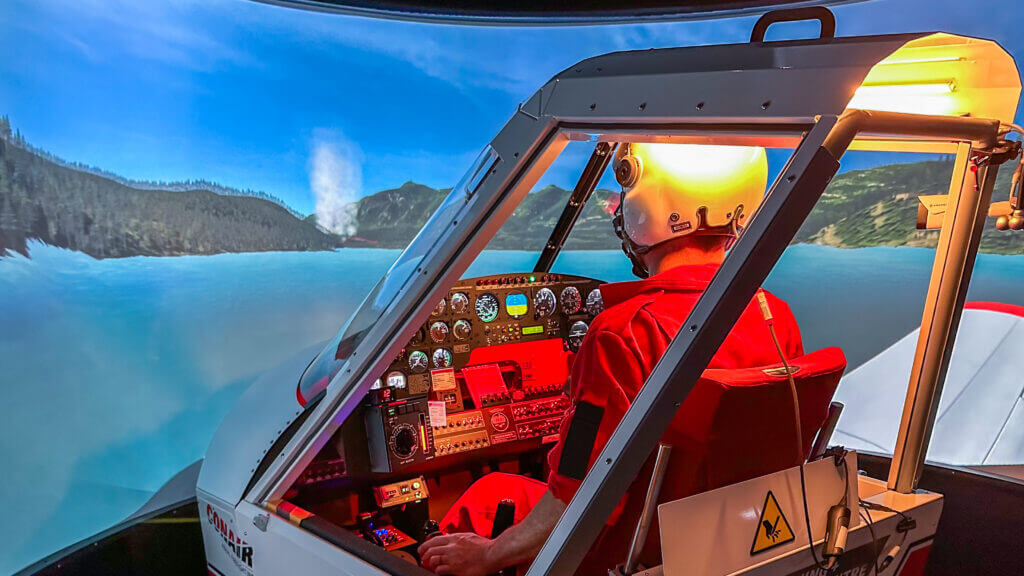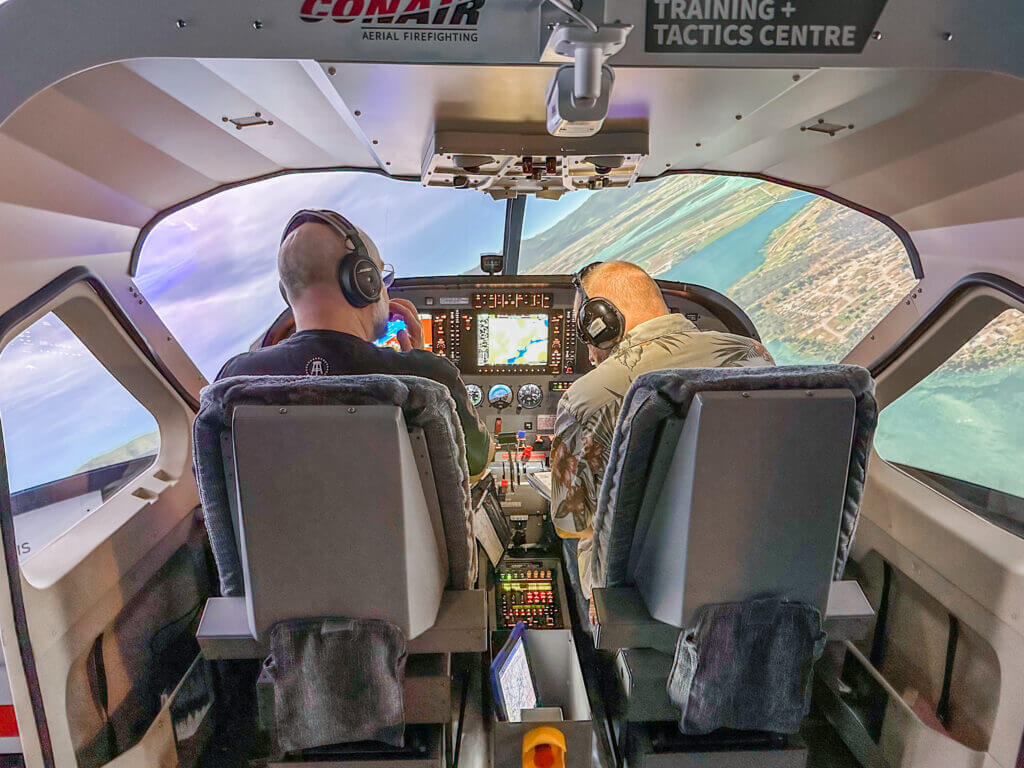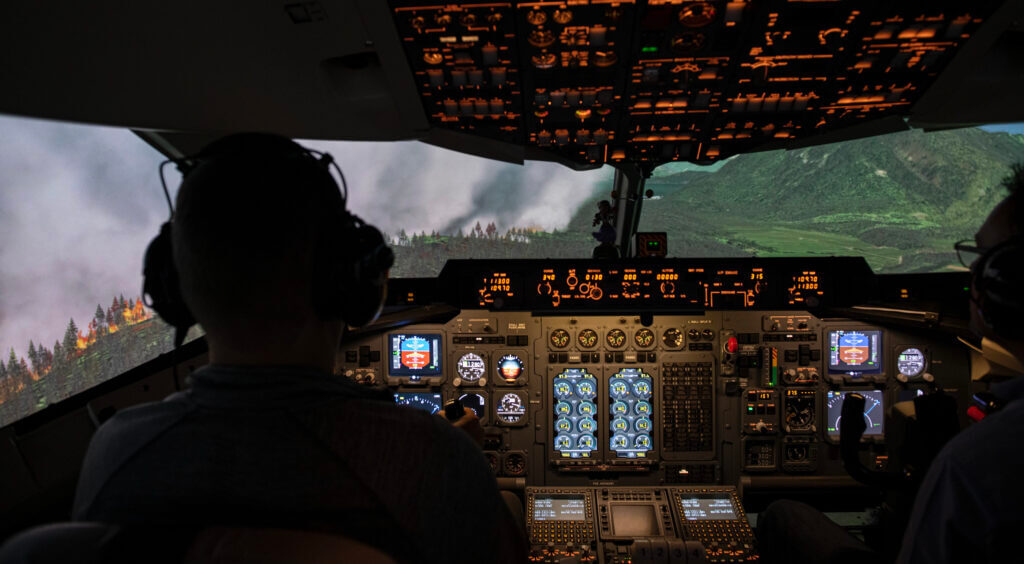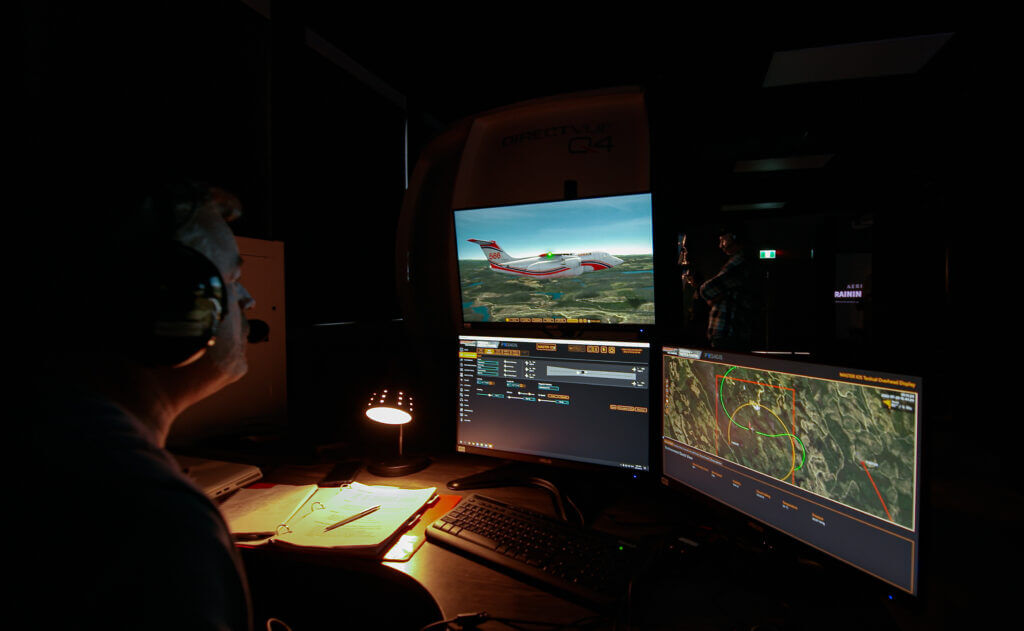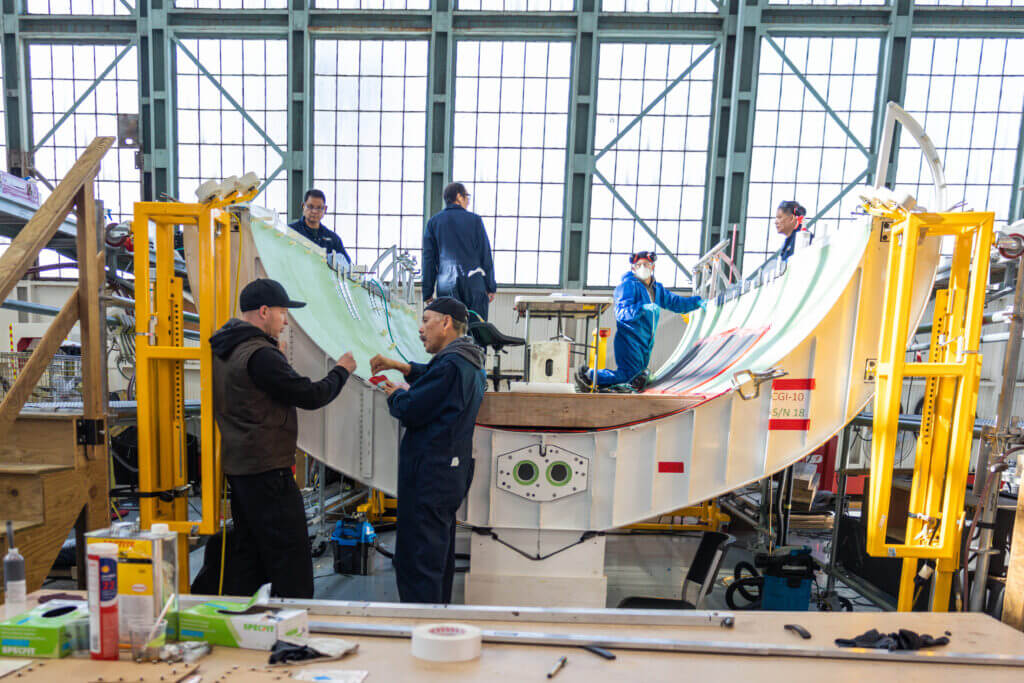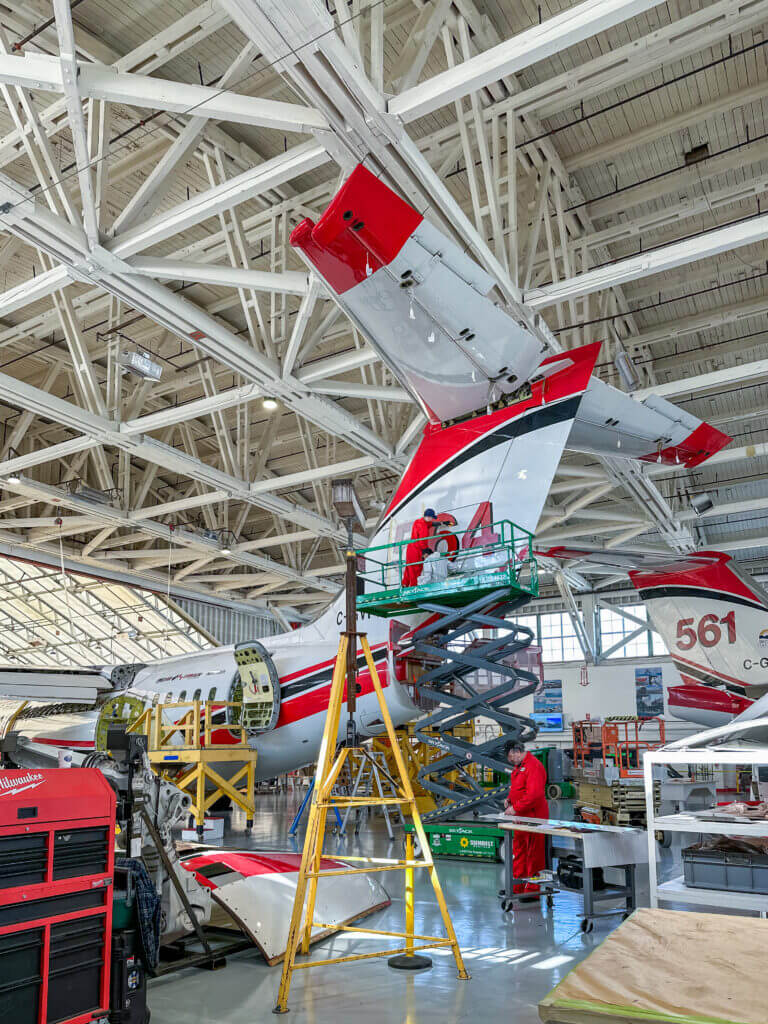Estimated reading time 18 minutes, 12 seconds.
Located along the Canada-United States border in British Columbia’s Fraser Valley, Conair Aerial Firefighting’s Abbotsford headquarters is perfectly positioned as a mission control center for wildfire suppression efforts along the West Coast and beyond. The company — including its U.S. subsidiary Aero-Flite — operates the world’s largest, privately owned fixed-wing fleet, totaling roughly 70 aircraft including the Dash 8-400 Airtanker (AT), the Avro RJ85 AT, the amphibious AT802 Fire Boss, the land-based AT802, the CL-415 waterbomber, the Turbo Commander TC-690A, and the Cessna 208B Grand Caravan.
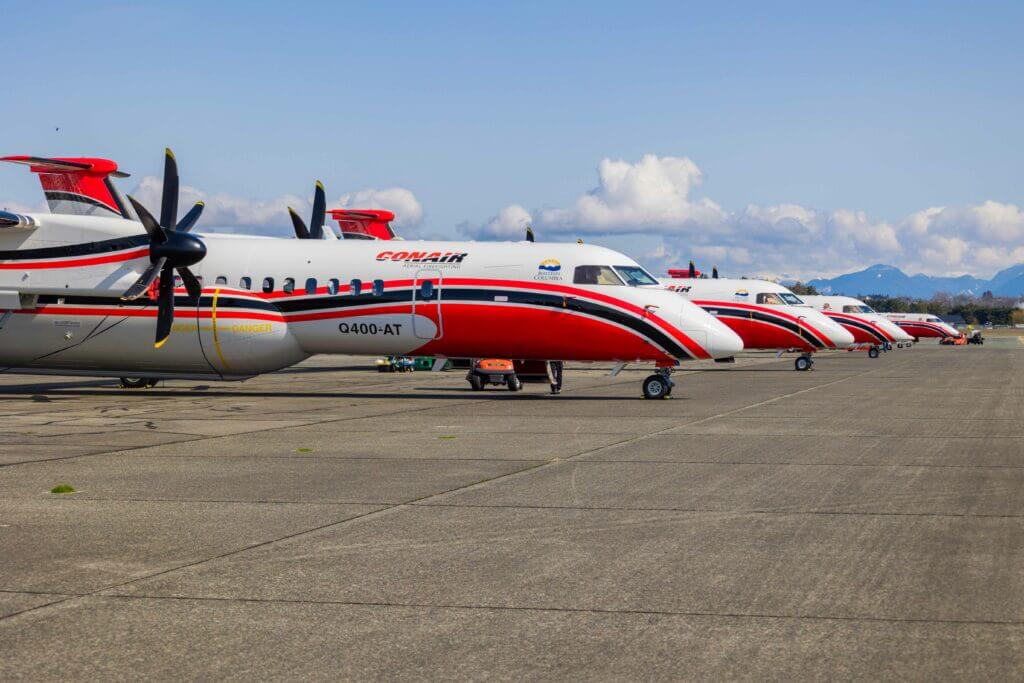
privately owned fixed-wing fleet, totaling roughly 70 aircraft. Annie Vogel Photo
As high winds, unseasonably warm weather, and dry conditions signal a change to what is known as the wildfire season, preparations and operations to combat wildfires must change, too.
Jeff Berry, Conair’s director of business development, who has over 40 years of experience in the aerial fire industry, said, “If you look at the length of a fire season as a wavelength, they’re getting longer. But there’s also an amplitude shift in that they’re wetter and dryer. So, you get these heat domes at 50 degrees [Celsius] that change the fire behavior in three days, or you’ll get super wet periods any time of the year with floods.”
Instability in our weather systems has dramatically impacted the severity of wildfires around the globe, and it’s taken a noticeable turn in the last decade.
Any pilot will tell you that small changes to your control inputs can significantly impact how your aircraft flies. The same is true for temperature changes. “A two-degree increase in average temperature is catastrophic in the wildfire world because it means there are more days of lower relative humidity,” explained Berry. “So of course, seasons are changing. We rarely talk to an agency that hasn’t seen that.”
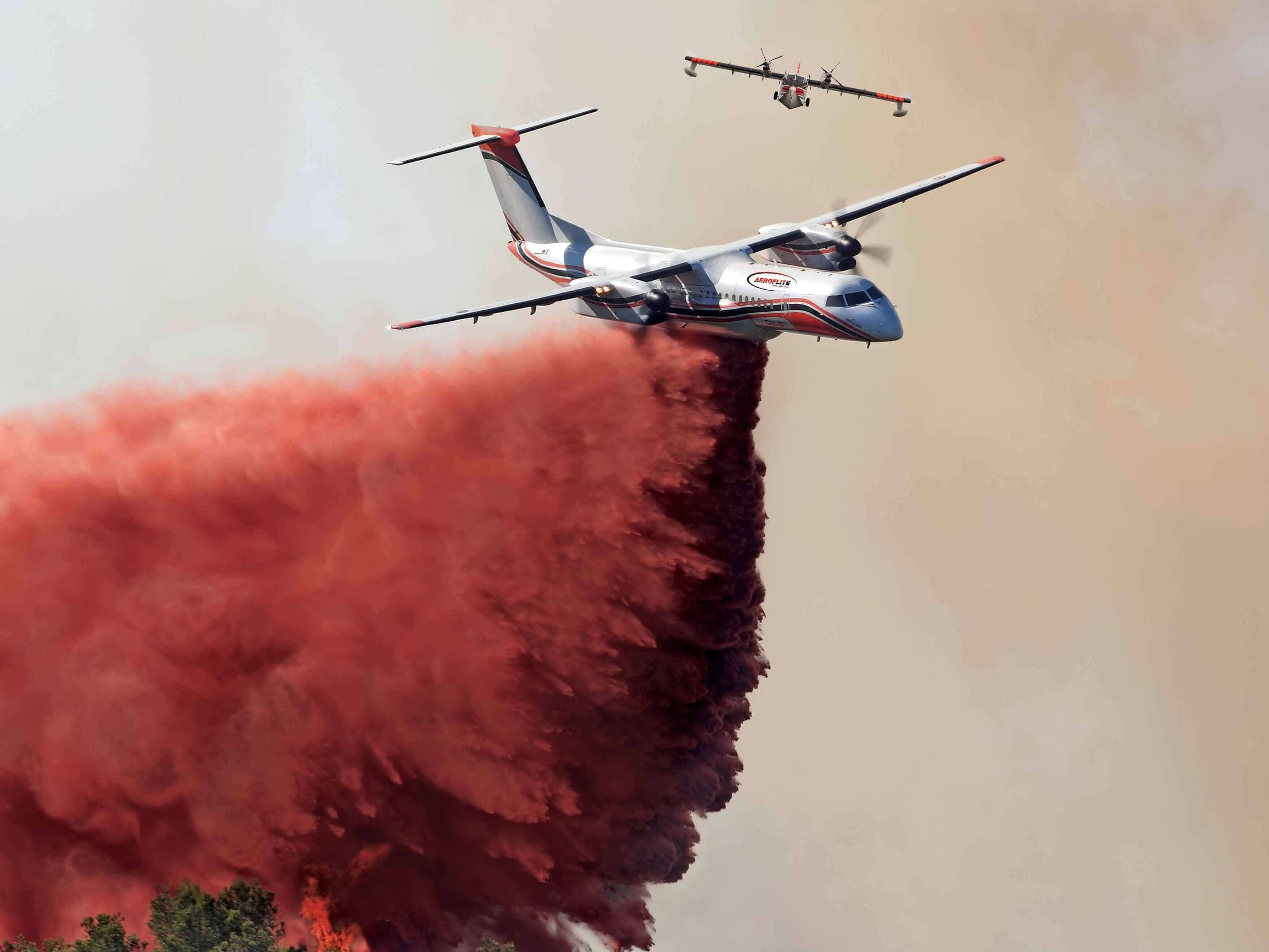
Such changes make Conair’s spring training all the more integral to the success of its operation.
Pushing the Training Envelope
Conair’s expertise is in high demand with contracts across Alaska, Yukon, Australia, and the Western Seaboard. The company’s subsidiary, Aero-Flite of Spokane, Washington, employs 168 people and operates a mixed fleet of fixed-wing aircraft, including seven Avro RJ85 ATs and four Canadair CL-415 waterbombers. AeroFlite’s pilots begin training in February and deploy much earlier in the year, while preparations for Conair’s Canadian operation begins in April at the company’s Training and Tactics Centre in Abbotsford.
The largest and most comprehensive aerial firefighting training facility in the world, the Training and Tactics Centre was built in response to an industry need for more advanced simulator training.
“We decided to get into simulation because it was becoming increasingly difficult to prepare pilots for what comes at them every fire season,” Berry told Skies. “We can no longer rely on a fire season slowly escalating and allowing us to prepare. We can have 10 or 20 aircraft respond on the first day, creating all kinds of challenges that we can actually simulate now.”
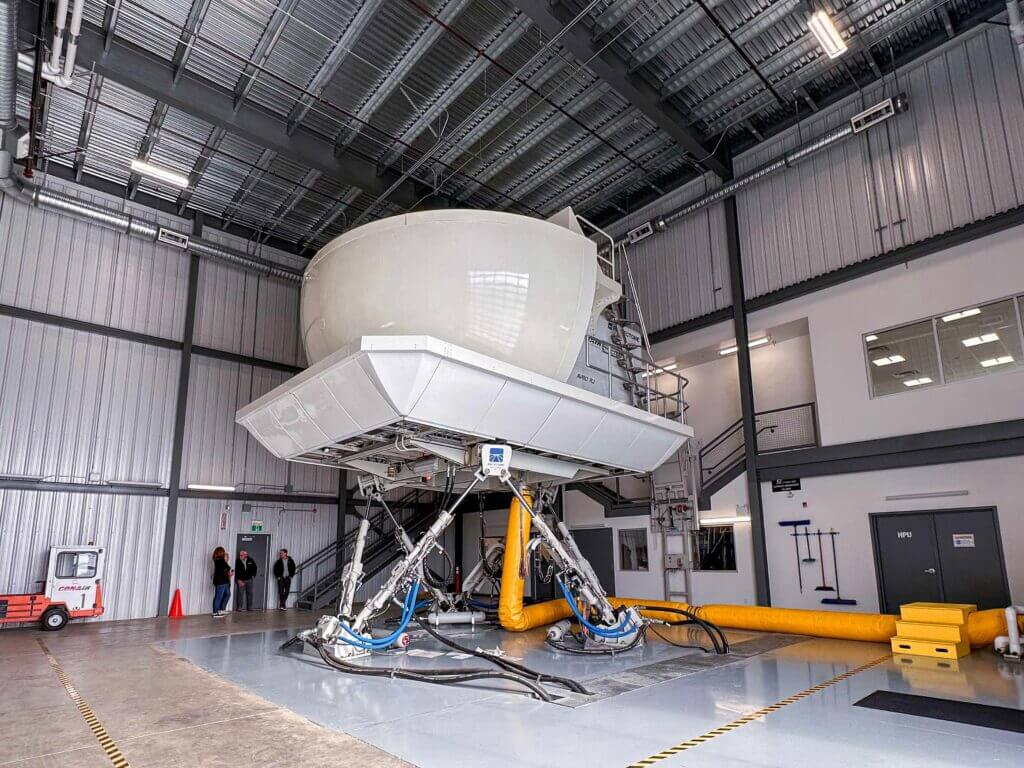
In 2016, Conair began planning the construction of what is now the K. Barry Marsden Training Centre at its Abbotsford facility — named after the late Barry Marsden, who was an aerial firefighting pioneer and one of Conair’s original founders. The company first installed a Transport Canada Level D-certified RJ85 full-motion sim at the center, which was recently upgraded to include airtanker systems in the cockpit. The system is now certified to have aerial fire-specific graphics like smoke, fire, and retardant lines. Next came an AT802 Level 5 flight training device (FTD), which features a cockpit identical to what is found in Conair’s AT802 fleet.
The pride and joy — and the final phase — of Conair’s Training and Tactics Centre is the new Mission Training System (MTS), which features six integrated FTDs that allow pilots to operate different aircraft within Conair’s fleet and communicate all together in a synthetic wildfire environment. The FTD types in the MTS include the C208 and TC-690B Bird Dogs; the Dash 8-400AT; the RJ85 AT; and the AT802 Fire Boss and AT802 land-based airtanker. Each FTD is equipped with an exact replica of the instruments found in Conair’s fleet, so when the pilots climb into the live aircraft, there’s no difference.
When training in the MTS, “the pilots can all see the same fire, and each other,” explained Berry. Each pilot who participates in an MTS training session has an instructor who observes the flying.
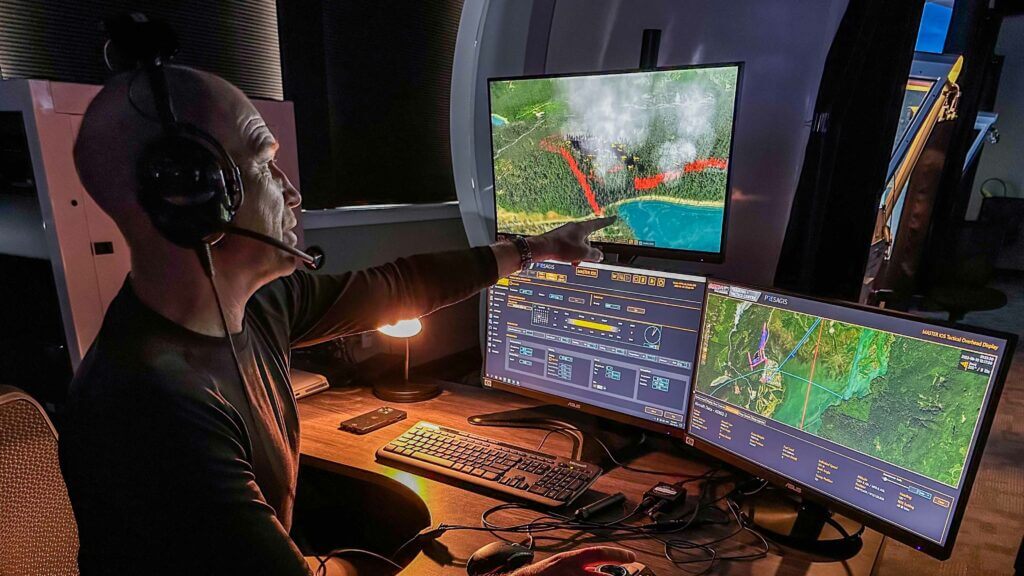
“Then we have someone managing the sim who has overall control,” continued Berry. “They can change the weather, they can change fire behavior by increasing the wind, they can look at multiple views of the attack, etc.”
Berry noted that the entire mission is recorded, so if the sim manager sees a problem, they simply drop a bookmark and can fast forward to that bookmark during the debrief to discuss the problem. Following the debrief, the pilots return to the MTS and “the simulation goes up a notch,” he said.
“The neat thing, too, is that we can have two different simulations running simultaneously in the MTS,” Berry shared.
The unique wildfire simulation software component was developed and is owned by Conair, which owns and deployed the MTS. The immersive environments for the system, such as smoke and fire, were created by Presagis, which specializes in 3D advanced modelling and simulation software. Lastly, the cockpits for the FTDs were built by Canadian company Flightdeck Solutions.
The MTS is unlike anything available in the fire suppression industry. In addition to the integration capabilities and realistic environment, the technology allows fire and smoke to react according to the drops, relative humidity, terrain, and other factors that play a role in the movement of a wildfire.
Conair’s simulator program manager, Mark Baird, who is also a pilot, believes the MTS has “filled a critical gap in Conair’s training program. Actual aerial firefighting operations involve complex scenarios with multiple aircraft, coordinating different agencies via several radio frequencies and real fire. Before the MTS, these pieces had to be simulated, sometimes with a significant amount of imagination. The realism of the simulation contributes dramatically to better training.”
While a considerable amount of risk comes with the job of being an aerial firefighting pilot, the MTS helps mitigate these hazards by preparing pilots with the knowledge and confidence required to complete a fire season safely.
Once pilots deploy into the field, what comes next? Berry said Conair and its pilots “become an asset for the agency we deploy to, and they tell us where to go and when to go there. Our job is to be ready, maintain, and respond. After that, it’s wherever the agency and the fire season take us.”

No two fire seasons are the same, and because of that, the company must prepare for every possible scenario. “Our primary role is initial attack,” added Berry. “Get in when the fire is the smallest possible, and hammer it so the ground crews can come and put it out.”
Although that may seem straightforward to some, Berry and the Conair team know first-hand the complexities of the job.
Baird shared: “Sometimes the most challenging part of the job can be the downtime between fire action. We can go for long periods, sometimes many weeks, without being dispatched on a fire if the weather is not conducive for fire starts.
“But, in the same breath, the most rewarding part is fighting a fire and seeing the difference we can make. Time is critical, and we can avert a severe natural disaster by getting there quickly.”
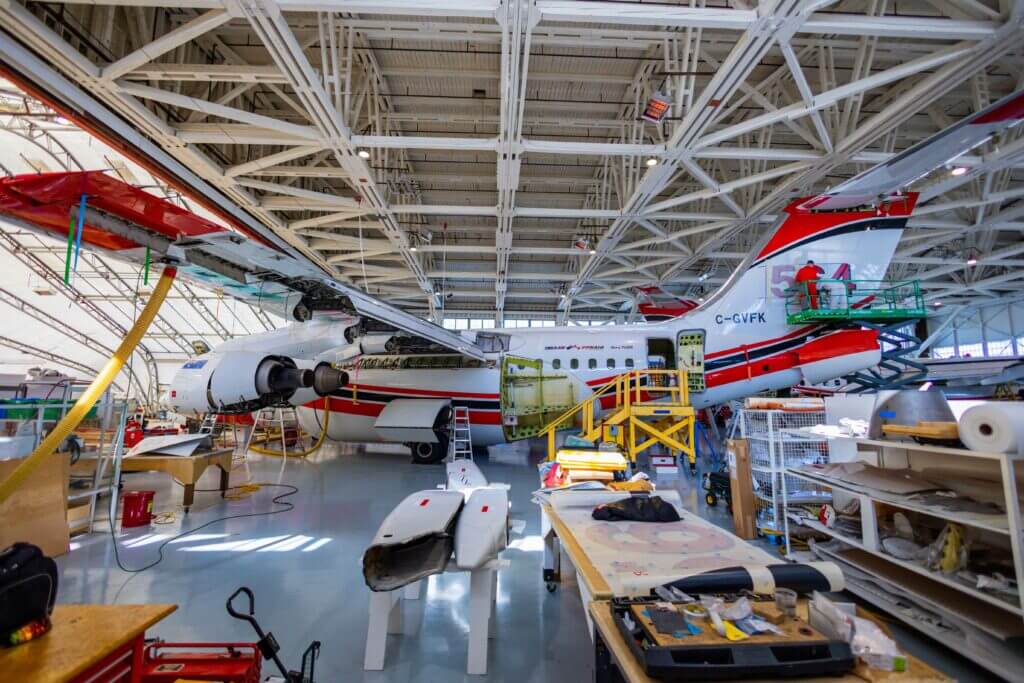
Support from all Angles
Walking through Conair’s headquarters gives you a better understanding of all the work that goes into the services the company provides — evident from the sheer size of the 150,000-square-foot facility, the volume of aircraft, and the hundreds of technicians wrenching away on airplanes. Behind every door lies an exciting new project, from Dash 8-400 airtanker conversions and diverse aircraft maintenance, to state-of-the-art simulators — all supported by a team of roughly 300 employees.
Interestingly, Conair’s fleet has recently undergone a major transition with the retirement of its Lockheed Electra and Convair 580 aircraft. Those aircraft are being replaced with the Dash 8-400AT and RJ85 AT. While Conair has been building Dash 8 airtankers in a multi-role configuration (known as the Dash 8-400MRE) for the French government since 2005, it is now building, maintaining, and flying the Dash 8-400AT for its own operations, too — all with support from the manufacturer, De Havilland Canada.
In Conair’s Hangar #2 — the conversion hangar — you’ll find hundreds of mechanics working away on various Dash 8-400s. Berry said Conair buys the aircraft globally and they are flown into Muskoka, Ontario, where they are stored, maintained, and painted before they depart for Abbotsford. Once they arrive at headquarters, the team at Conair will strip the interior and add the satcom, bomb system, and all other mods, as well as install the company’s 10,000-liter proprietary tank system (the Dash 8-400AT Retardant Delivery System). From start to finish, the conversion process takes roughly 75 days.
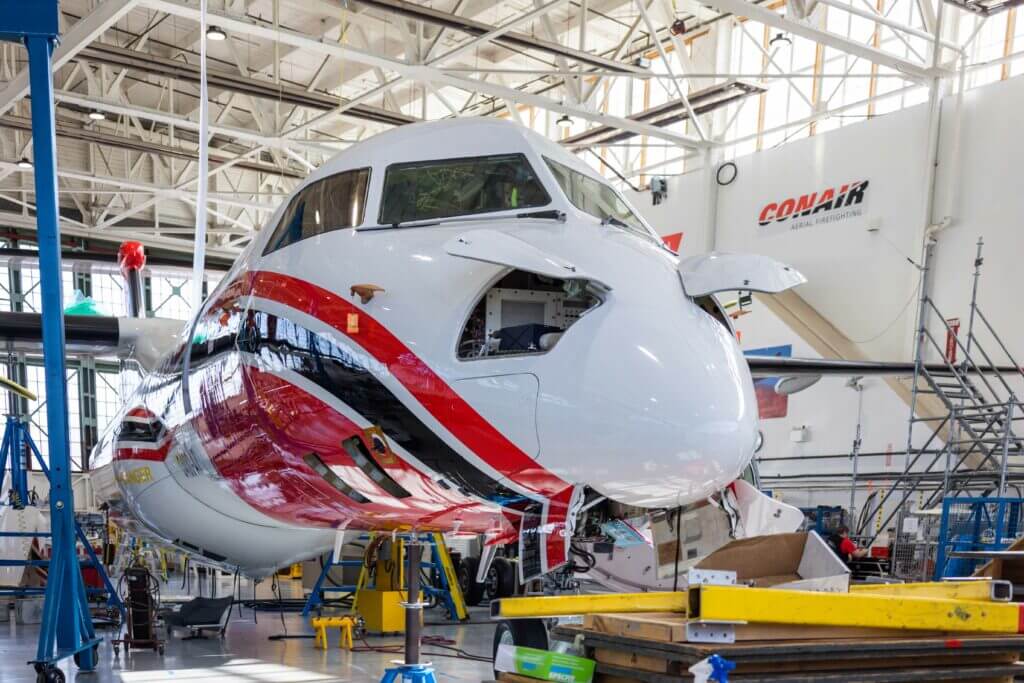
“We worked very closely with the OEM to develop computer models for a tank installation that assured us that we were not changing the load paths on the airplane” — which, if disturbed, could create damage to the airframe, noted Berry. “As well, the tank features pneumatic hoses that are connected to vents, so when the pilot triggers the load, those are forced open so that the load flows out nice and smooth.”
Berry said the Dash 8-400 has several advantages over other firefighting types, and is tactically a very versatile aircraft.
“One of the huge advantages of this airplane is it carries about 85 percent of the load of a typical Type 1 [airtanker], but it burns way less than half the gas, it travels just as fast, and it has the ability to take off at 5,000 feet,” he explained.
Continuing into Conair’s Hangar #1, you’ll find the Turbo Commanders, Cessnas, and RJ85s. The RJ85 jet aircraft is an exciting choice when it comes to aerial firefighting, noted Berry. Jets are not the typical choice for airtanker operations, as they aren’t necessarily designed for low-level flight. However, the RJ85 is different.

“British Aerospace designed [the RJ85] specifically to land at London City Airport, which has a very steep approach and departure,” explained Berry. “They added a clamshell airbrake to the tail, and it’s like a parachute. In firefighting, that works really well to keep the speed under control because when the crews finish a drop, they close the clamshell, they’ve already got power on the engines, and the aircraft accelerates away with lift.”
Conair had to be creative with the external retardant tank for the RJ85, since the landing gear is in the middle of the airframe.
“We essentially put a gear door on the tank, and the gear stayed attached in the same place,” said Berry. “The tank is in three sections — there’s one section in the aft and two in the front, and they’re all linked together and they drop as one.”
Of course, a well-equipped fleet isn’t the only ingredient in a recipe for success. The aircraft must be properly and regularly maintained, too. That’s where Conair’s team of more than 65 aircraft technicians step in.
“Some of our aircraft have eight hours of maintenance for every hour of flying,” Berry told Skies. “There’s not a single corner cut.
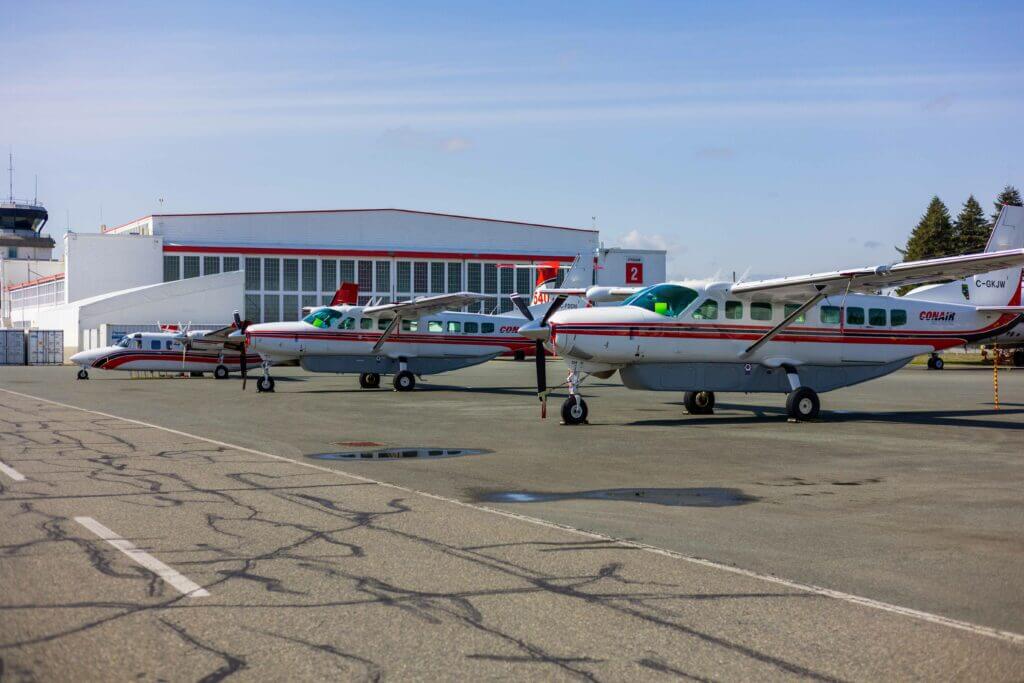
“We just finished our contract in Australia, and we had 99 percent availability,” he added. “That sort of maintenance is what it takes to deliver that. And above all else, safety is the most important thing. We have a really open incident reporting system, and we want to make sure we report every single hazard to prevent an accident.”
Setting an Example
Conair’s pioneering innovations and admirable operation have the potential to revolutionize how the industry approaches aerial firefighting training and practices.
It’s evident that the company’s push for aerial firefighting superiority started from a place of passion and commitment to being the best for its customers, dating back to its inception more than 50 years ago. Its innovative approach is inspiring, and provides the team with the bravado needed to change the face of the industry. No doubt, it will be interesting to see how Conair’s work impacts wildland firefighting in the years to come.
A big thank you to everyone supporting the mission at Conair to provide exceptional aerial suppression services and protect communities; we look forward to seeing your continued ingenuity and its impact on the industry.
